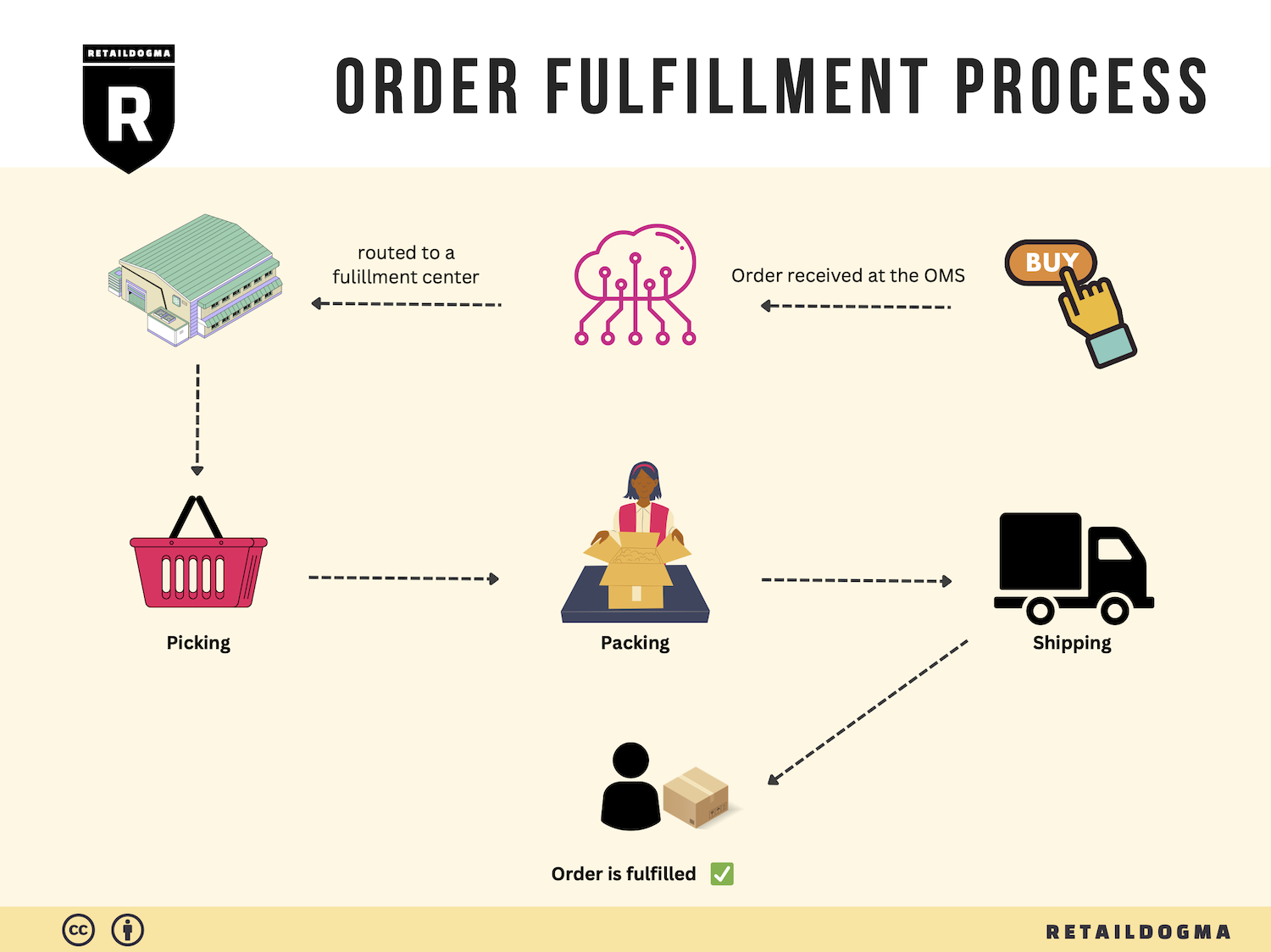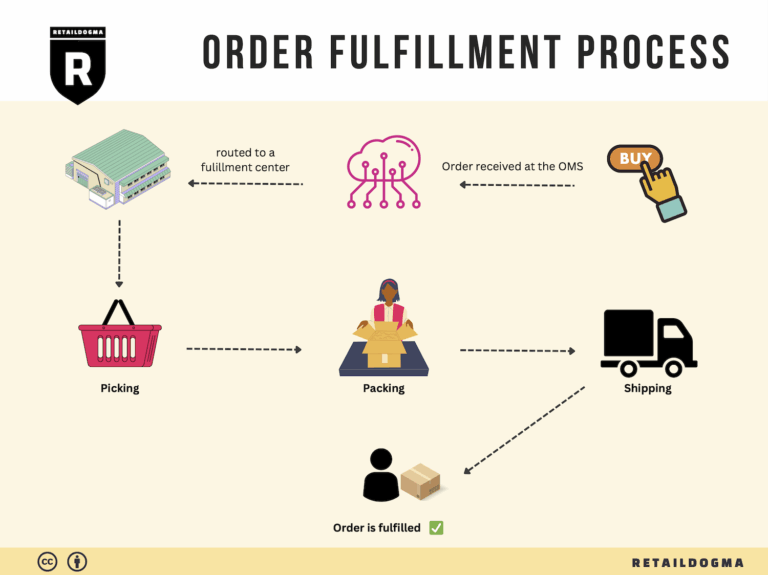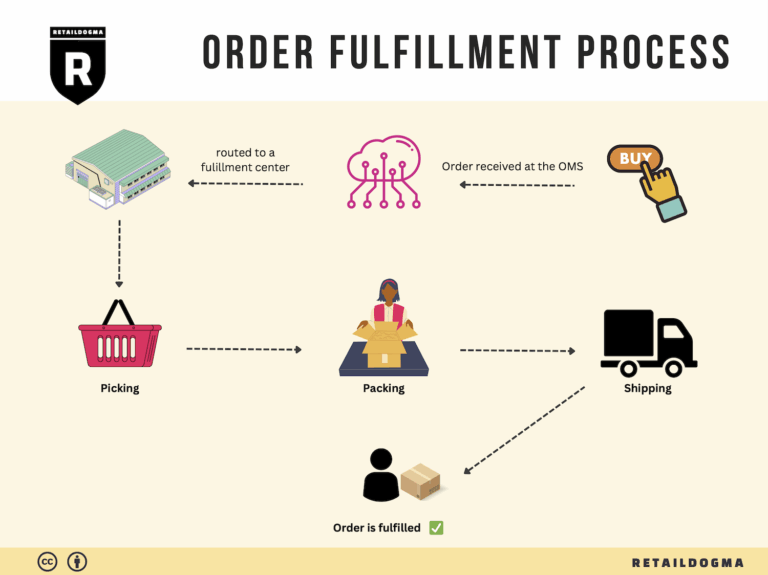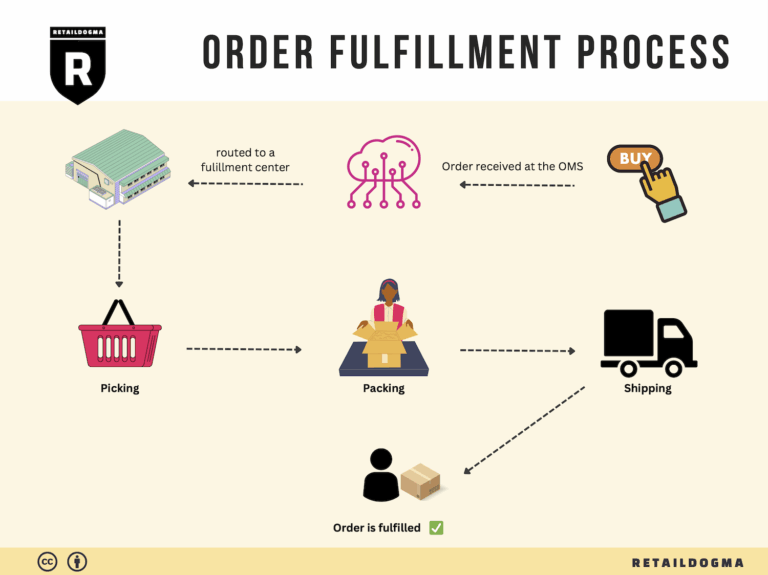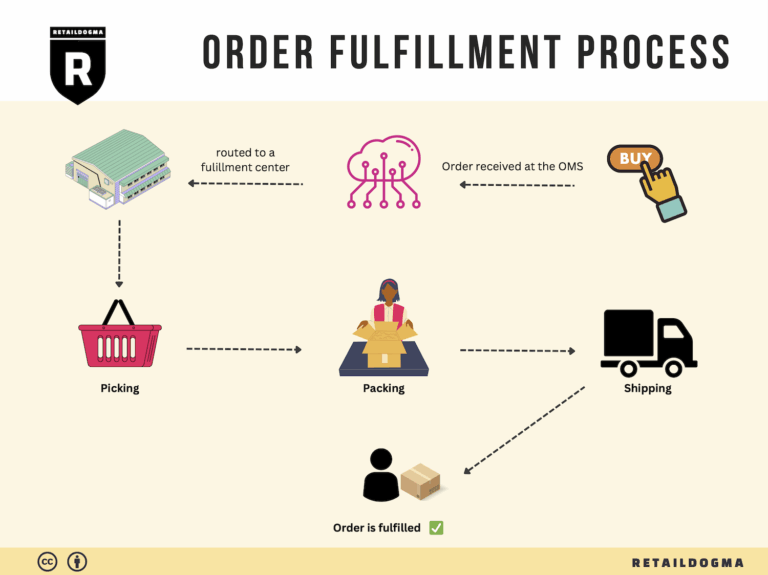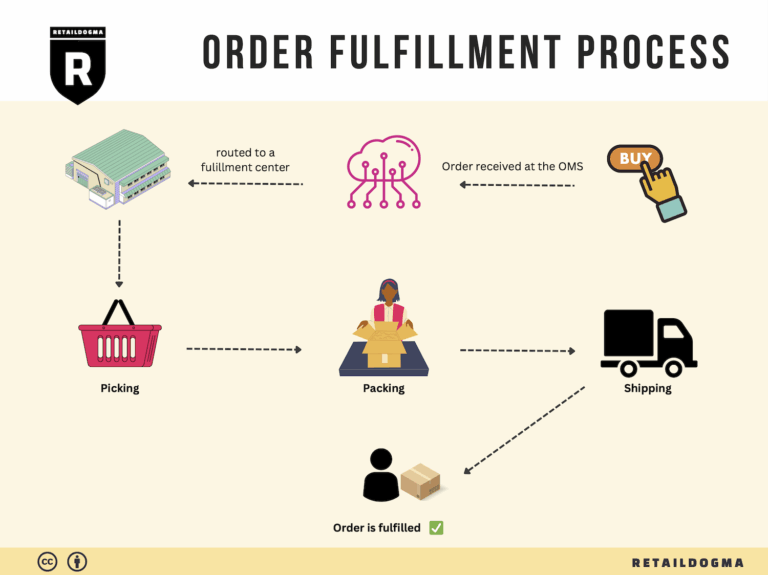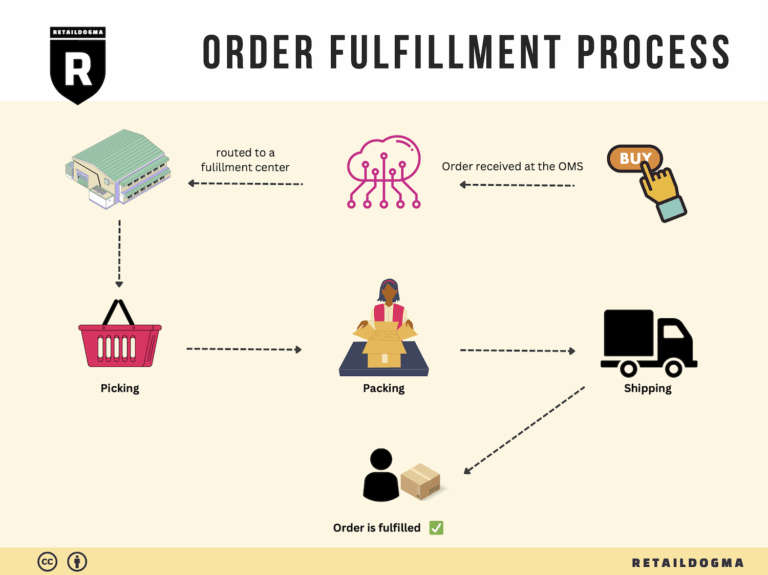What Is A Fulfillment Center? A Complete Guide (2025)
What is E-commerce Fulfillment? An Introduction for Growing Businesses
Understanding the Fulfillment Challenge
As a growing online business, you may find yourself grappling with one of the most daunting tasks: managing the packing and shipping of orders. The excitement of making sales can quickly turn into chaos as you navigate the complexities of getting products to your customers efficiently. This is where e-commerce fulfillment comes into play. Simply put, fulfillment is the process of getting a product from your inventory to your customer’s doorstep. It encompasses everything from warehousing and inventory management to picking, packing, and shipping orders.
In this guide, we will explore the various fulfillment models available to online retailers, including Third-Party Logistics (3PL) and Fulfillment by Amazon (FBA). Each model has its own set of advantages and challenges, and understanding these can help you make informed decisions about which approach aligns best with your business needs.
Core Fulfillment Services
We will delve into the core services that fulfillment providers typically offer. These include order processing, inventory management, shipping, and returns handling. Knowing what services are available can help you identify a partner that not only meets your current needs but also scales with your business as it grows.
Choosing the Right Fulfillment Partner
Selecting the right fulfillment partner is critical to your success. This guide will provide you with practical tips on how to evaluate potential partners based on their capabilities, technology, and customer service. We’ll also discuss important factors to consider, such as location, shipping speed, and flexibility, all of which can significantly impact your customer experience.
Understanding Pricing Structures
Cost is always a consideration when it comes to fulfillment. We’ll break down the different pricing models used by fulfillment providers, including per-order fees, storage costs, and shipping rates. By understanding these costs, you can better assess the overall value of a fulfillment solution and how it fits into your budget.
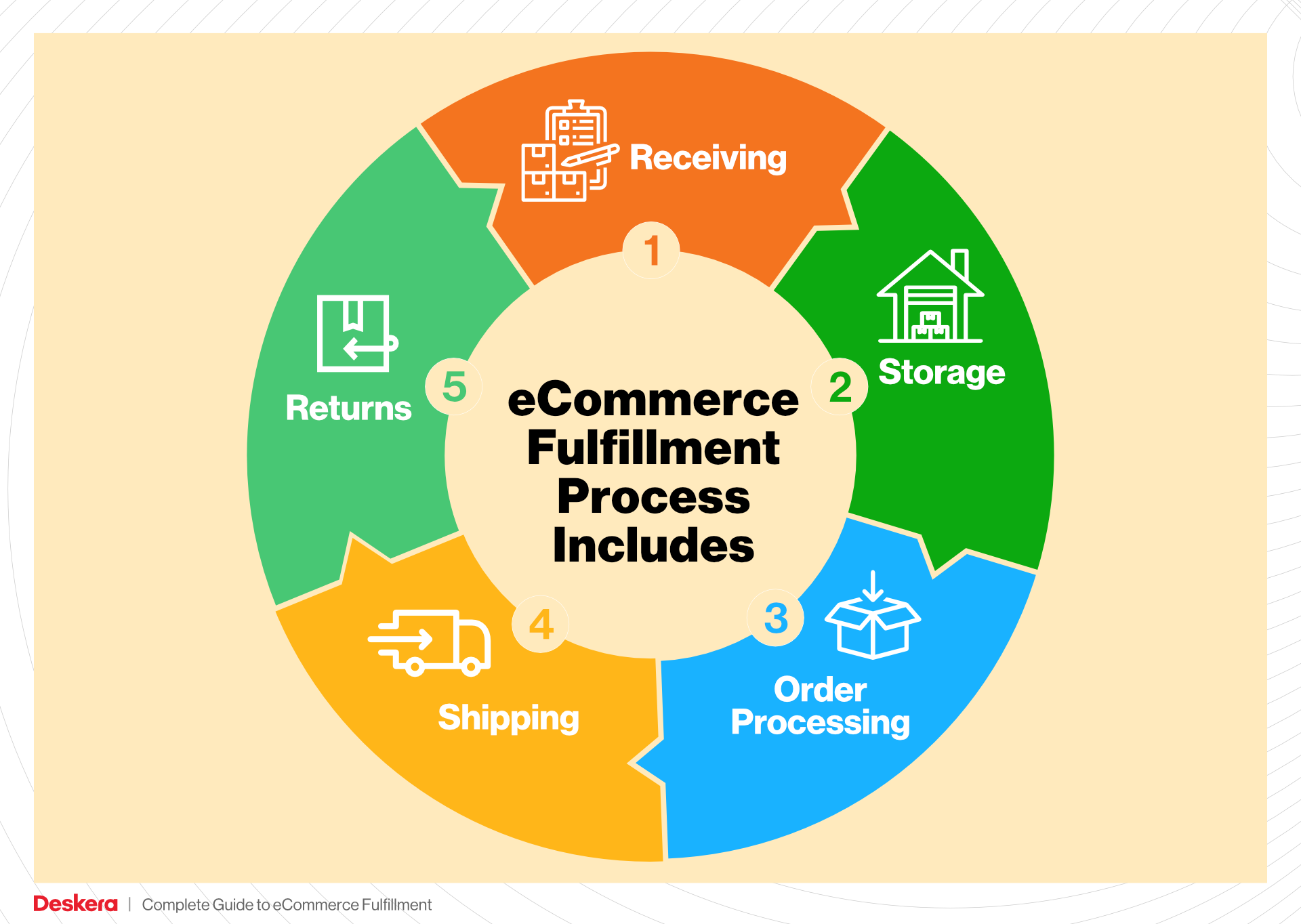
Empowering Smart Decisions
Ultimately, the goal of this guide is to empower you—business owners, operations managers, and entrepreneurs—to make smart, strategic decisions about your logistics. As you scale your operations, having a solid understanding of e-commerce fulfillment can help you enhance your efficiency, improve your customer satisfaction, and drive growth in your business. By navigating the complexities of fulfillment with confidence, you can focus on what truly matters: growing your brand and delighting your customers.
What You’ll Learn In This Guide
- What is E-commerce Fulfillment? An Introduction for Growing Businesses
- The Order Fulfillment Process: From ‘Buy’ Button to Customer’s Door
- Comparing Fulfillment Models: In-House vs. 3PL vs. Dropshipping
- A Deep Dive into Amazon FBA: Pros, Cons, and Who It’s For
- Core Services Offered by Fulfillment Centers
- How to Choose a Fulfillment Partner: A 6-Point Checklist
- Understanding Fulfillment Pricing: A Breakdown of Common Fees
- Frequently Asked Questions (FAQs) about Fulfillment
- Conclusion: Is Outsourcing Fulfillment the Right Move for Your Business?
- Important Disclaimer
The Order Fulfillment Process: From ‘Buy’ Button to Customer’s Door
1. Receiving Inventory
The order fulfillment process begins with the receiving of inventory at the fulfillment center. This step involves accepting shipments from suppliers, verifying the contents against purchase orders, and ensuring that all items meet quality standards.
Upon arrival, each item is checked for accuracy and condition. This is crucial because discrepancies or damages at this stage can lead to issues down the line, such as delays in order processing or customer dissatisfaction. Efficient receiving also involves the use of Stock Keeping Units (SKUs), which are unique identifiers for each product. By scanning SKUs upon receipt, businesses can quickly and accurately log inventory into their system, reducing the likelihood of errors.
This step is vital for maintaining an accurate inventory count, which directly influences future purchasing decisions and stock management. A well-executed receiving process lays the groundwork for all subsequent steps in the fulfillment chain.
2. Warehouse Storage
After receiving, the next step is warehouse storage. Once verified, products are sorted and placed into designated storage areas within the fulfillment center. This organization is essential for ensuring that items can be easily located when orders come in.
Effective warehouse management utilizes strategies such as ABC analysis, where items are categorized based on their sales volume and profitability. High-demand products are often stored closer to the packing areas to expedite the picking process.
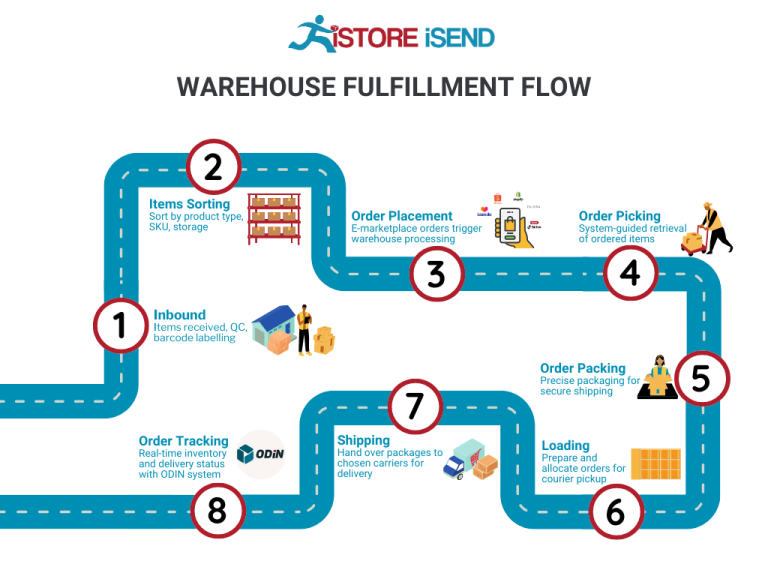
Proper storage not only maximizes space but also minimizes the time spent retrieving items. This step is crucial for maintaining operational efficiency and reducing costs associated with labor and time. An organized warehouse system is fundamental for scaling operations, as it directly affects how quickly orders can be fulfilled.
3. Order Picking
The order picking phase is where the fulfillment process truly comes to life. When a customer places an order, a pick list is generated, detailing the items needed to complete the order. This list guides warehouse associates as they navigate the aisles to gather the required products.
There are various picking methods, such as batch picking (where multiple orders are picked simultaneously) and zone picking (where pickers are assigned specific areas of the warehouse). Choosing the right method depends on the fulfillment center’s size and the volume of orders.
This step is critical because the accuracy and speed of picking directly impact customer satisfaction. Delays or errors at this stage can lead to incorrect shipments, returns, and ultimately, lost sales. Therefore, investing in technologies like handheld scanners and automated picking systems can significantly enhance productivity and accuracy.
4. Order Packing
Once items are picked, they proceed to the order packing stage. Here, products are carefully packed into boxes or shipping containers, ensuring they are protected during transit. This step is crucial for minimizing damage and returns.
Packing also involves selecting the appropriate packaging materials and sizes to optimize shipping costs. Utilizing dimensional weight pricing can help businesses save on shipping by ensuring they are not overpaying for excess package size.
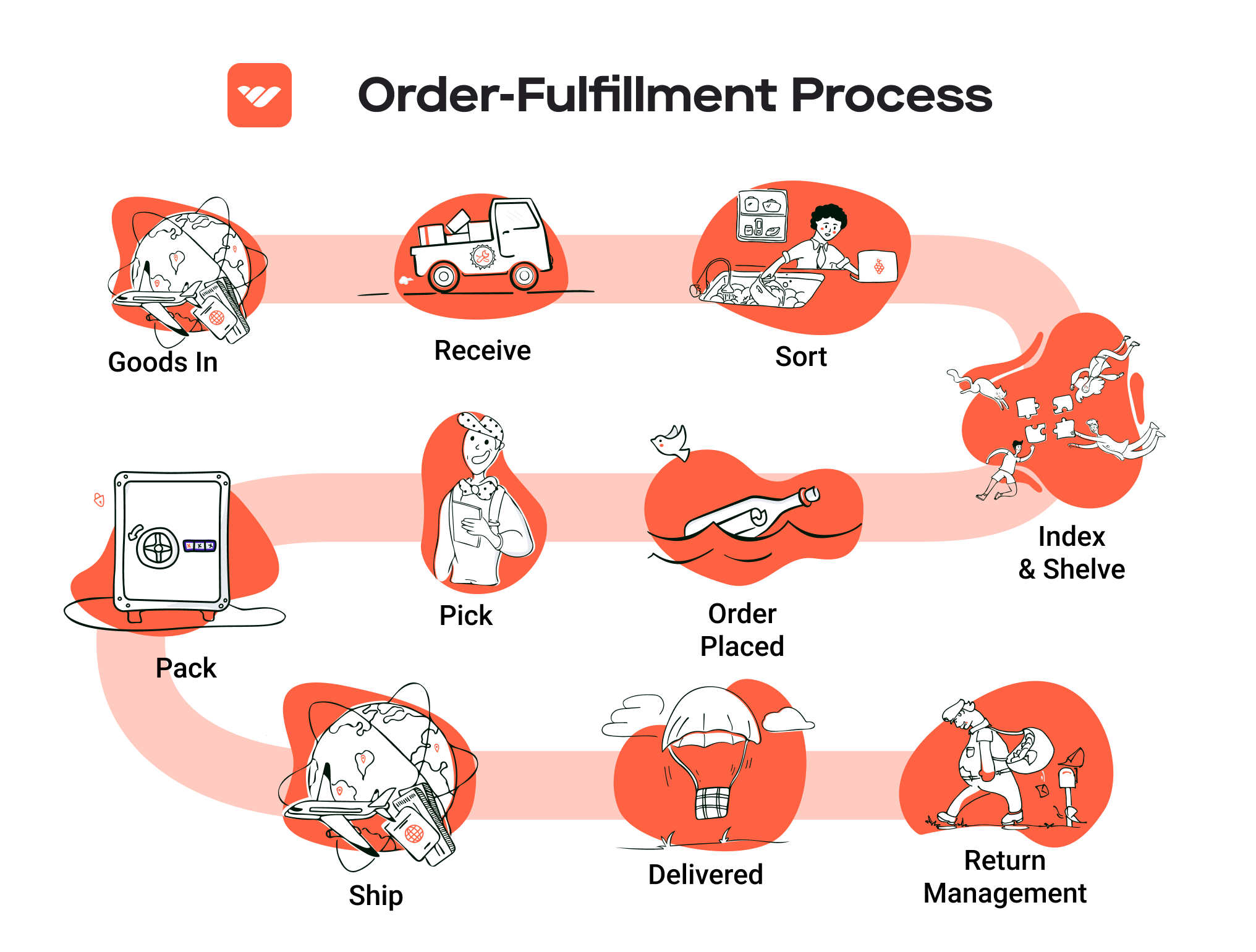
Additionally, packing includes labeling the shipment correctly, which is essential for tracking and ensuring timely delivery. A well-executed packing process enhances the customer experience, as it reflects the business’s attention to detail and commitment to quality. Effective packing strategies are pivotal for reducing returns and improving overall fulfillment efficiency.
5. Shipping & Delivery
The final step in the order fulfillment process is shipping and delivery. Once an order is packed and labeled, it is handed over to a carrier for delivery to the customer. This phase involves selecting the most cost-effective and timely shipping options based on the destination and customer preferences.
Key metrics in this stage include shipping time and tracking accuracy, which are essential for customer satisfaction. Offering multiple shipping options, including expedited services, can cater to varying customer needs and expectations.
Effective shipping strategies can significantly influence a business’s reputation and repeat purchase rates. By leveraging partnerships with reliable carriers and utilizing technology for real-time tracking, businesses can ensure that customers receive their orders promptly and can monitor their shipment status throughout the delivery process.
In summary, each of these five steps—receiving inventory, warehouse storage, order picking, order packing, and shipping & delivery—plays a critical role in the order fulfillment process. By optimizing each phase, e-commerce businesses can enhance operational efficiency, improve customer satisfaction, and ultimately scale their logistics effectively.
Comparing Fulfillment Models: In-House vs. 3PL vs. Dropshipping
Comparison of Fulfillment Models
| Model | Who Handles Inventory | Best For (Business Stage) | Key Advantage | Key Disadvantage |
|---|---|---|---|---|
| In-House Fulfillment | Business Owner/Staff | Startups to Established | Full control over inventory and operations | High overhead costs and resource-intensive |
| Third-Party Logistics (3PL) | Third-Party Provider | Growing Businesses | Scalable solution with reduced risk | Less control over inventory management |
| Dropshipping | Supplier | New Entrepreneurs and Startups | Low startup costs and no inventory risk | Lower profit margins and reliance on suppliers |
In-House Fulfillment
In-house fulfillment involves managing the entire logistics process internally. This means that the business owner or staff is responsible for receiving, storing, picking, packing, and shipping products directly to customers. This model is particularly beneficial for startups and established businesses that want to maintain complete control over their inventory and customer experience. One of the key advantages of in-house fulfillment is that businesses can customize their operations to align with their specific needs and brand identity. They can also directly handle customer service, which can enhance the overall customer experience.
However, this model also has significant drawbacks. Operating an in-house fulfillment center requires substantial upfront investment in warehouse space, equipment, and labor. It can also lead to high overhead costs, particularly for businesses that experience fluctuations in order volume. As the business scales, the complexities of managing inventory, order processing, and shipping logistics can become overwhelming, often requiring additional hires and advanced systems. Therefore, while in-house fulfillment offers control, it may not be sustainable for rapidly growing businesses without significant investment in infrastructure.
Third-Party Logistics (3PL)
Third-party logistics (3PL) providers offer a more flexible and scalable solution for businesses looking to optimize their fulfillment processes. In this model, a third-party provider manages inventory storage, order processing, and shipping, allowing businesses to focus on core operations such as marketing and sales. This model is ideal for growing businesses that need to scale quickly without the burdens of managing logistics internally. A significant advantage of using a 3PL is the ability to leverage the provider’s established infrastructure, including technology and expertise in supply chain management.
One of the main disadvantages of 3PL is the loss of direct control over inventory management and fulfillment processes. Businesses must rely on their 3PL partner to maintain quality standards and handle customer service issues. Additionally, while 3PL can help reduce operational costs, it is essential to thoroughly vet providers to avoid unexpected fees or service issues. Businesses may also face challenges in aligning their brand identity with the 3PL’s processes, which can affect the customer experience. As such, while 3PL can provide significant benefits, it is crucial for businesses to choose the right partner and maintain clear communication to ensure alignment.
Dropshipping
Dropshipping is a fulfillment model where the retailer does not hold inventory but instead relies on suppliers to ship products directly to customers. This model is especially appealing to new entrepreneurs and startups due to its low startup costs and minimal financial risk. With dropshipping, businesses can offer a wide range of products without the burden of inventory management, warehousing, or logistics. This flexibility allows entrepreneurs to test various product lines and pivot based on market demand without incurring significant costs.
Despite its advantages, dropshipping has notable drawbacks. One of the most significant challenges is the lower profit margins, as retailers typically pay a premium for the convenience of not holding inventory. Additionally, the reliance on suppliers can lead to issues such as stock shortages or shipping delays, which can negatively impact the customer experience. Moreover, since many retailers use the same suppliers, it can be challenging to differentiate products in a crowded market. Therefore, while dropshipping offers an accessible entry point into e-commerce, businesses must carefully select reliable suppliers and develop strong marketing strategies to succeed.
Conclusion
In summary, choosing the right fulfillment model is crucial for e-commerce businesses aiming to scale effectively. Each model—whether in-house fulfillment, 3PL, or dropshipping—offers distinct advantages and disadvantages that can significantly impact operations, costs, and customer satisfaction. As businesses grow, they should evaluate their operational capabilities, financial resources, and long-term goals to determine which fulfillment strategy aligns best with their needs. Adopting the right model can lead to streamlined operations, improved customer experiences, and ultimately, greater success in the competitive e-commerce landscape.
A Deep Dive into Amazon FBA: Pros, Cons, and Who It’s For
Understanding Fulfillment by Amazon (FBA)
Fulfillment by Amazon (FBA) is a service provided by Amazon that allows sellers to store their products in Amazon’s fulfillment centers. Amazon then takes care of storage, packaging, shipping, and customer service, enabling sellers to leverage Amazon’s vast logistics network. This service is particularly beneficial for e-commerce business owners looking to scale their operations without the overhead of managing their own fulfillment processes.
How FBA Works
-
Product Listing: Sellers create product listings on Amazon and specify that they will use FBA.
-
Inventory Shipment: Sellers send their inventory to Amazon’s fulfillment centers. It’s essential to adhere to Amazon’s packaging and shipping guidelines to avoid penalties.
-
Storage: Once received, Amazon stores the products in their warehouses. Sellers are charged storage fees based on the amount of space their inventory occupies.
-
Order Fulfillment: When a customer orders a product, Amazon picks, packs, and ships the product on behalf of the seller. This includes handling returns and customer inquiries.
-
Customer Service: Amazon provides customer service for FBA orders, which includes managing returns and refunds.
Pros of Using FBA
-
Prime Eligibility: One of the significant advantages of FBA is that products fulfilled by Amazon are eligible for Amazon Prime. This boosts visibility and sales potential, as Prime members are more likely to purchase items with faster shipping options.
-
Customer Trust: Leveraging Amazon’s trusted brand can lead to increased sales. Customers often feel more comfortable buying from sellers using FBA due to Amazon’s established reputation for customer service.
-
Multi-Channel Fulfillment: FBA allows sellers to fulfill orders not just on Amazon but also from other sales channels like eBay or their own websites. This flexibility enables businesses to streamline their operations across multiple platforms.
-
Scalability: FBA allows sellers to scale their business without needing to invest in their own warehousing and logistics infrastructure. Amazon handles the logistics, allowing sellers to focus on marketing and product development.
-
Automated Logistics: With FBA, sellers can automate much of their logistics, including inventory management and shipping. This reduces the workload and allows for a more efficient operation.
Cons of Using FBA
-
High Fees: While FBA can streamline fulfillment, the fees can add up. Sellers are charged for storage space and for each unit shipped. This can significantly eat into profit margins, especially for low-cost items.
-
Strict Inventory Rules: Amazon has stringent inventory management rules, including requirements for labeling, packaging, and inventory limits. Non-compliance can lead to additional fees or even suspension of selling privileges.
-
Commingling Risks: FBA products may be commingled, meaning that sellers’ products are stored alongside those of other sellers. This can lead to issues such as receiving returns that are not your products, or negative reviews stemming from issues with products from other sellers.
-
Limited Control Over Shipping: While Amazon handles logistics, sellers have limited control over how their products are packaged and shipped, which can affect brand presentation and customer experience.
-
Dependency on Amazon: Relying heavily on FBA means that sellers are also dependent on Amazon’s policies and algorithms. Changes in these areas can have significant impacts on visibility and sales.
Who is FBA Best For?
Fulfillment by Amazon is best suited for:
-
Small to Medium-Sized Businesses: Companies that are looking to scale quickly without the overhead of managing their own fulfillment infrastructure can benefit significantly from FBA.
-
Sellers of High-Volume Items: Products with a high turnover rate are ideal for FBA as they can help offset the costs associated with storage and fulfillment.
-
Entrepreneurs in Niche Markets: Those who sell unique or specialized products can leverage Amazon’s platform to reach a broader audience while still focusing on their niche.
-
Brands Looking to Enhance Visibility: Sellers who want to capitalize on Amazon’s customer base and trust can benefit from FBA’s Prime eligibility and customer service offerings.
-
Multi-Channel Sellers: Businesses that sell across multiple platforms and want to streamline their logistics can utilize FBA for their Amazon sales while fulfilling orders from other channels.
Conclusion
Fulfillment by Amazon offers a robust solution for e-commerce businesses looking to scale efficiently. While there are notable advantages such as Prime eligibility and customer trust, the associated costs and risks must be carefully considered. By understanding the intricacies of FBA, sellers can make informed decisions that align with their growth strategies and operational capabilities.
Core Services Offered by Fulfillment Centers
Inventory Management & Warehousing
Inventory management and warehousing are fundamental services offered by fulfillment centers that help e-commerce businesses maintain optimal stock levels and streamline operations. This service involves the systematic tracking of inventory quantities, locations, and conditions within a warehouse. Fulfillment centers utilize advanced technology, such as inventory management software and barcoding systems, to ensure accurate inventory counts and real-time visibility.
The benefits of effective inventory management are manifold. First, it minimizes the risk of stockouts or overstock situations, both of which can lead to lost sales or increased carrying costs. For e-commerce businesses, where customer demand can be unpredictable, having a reliable inventory management system ensures that products are available when customers want them, enhancing customer satisfaction and loyalty. Additionally, fulfillment centers typically offer scalable storage solutions, allowing businesses to adjust their warehousing needs based on seasonal demand fluctuations without the burden of long-term leases or excess overhead costs.
Pick and Pack Services
Pick and pack services are critical to the order fulfillment process, where products are selected from inventory and packed for shipping. Fulfillment centers employ dedicated staff and automated systems to efficiently pick items from the shelves, verify their accuracy, and package them according to specific requirements. This service often includes custom packaging options, branding materials, and the inclusion of promotional inserts.
The primary advantage of pick and pack services is the speed and accuracy with which orders are fulfilled. E-commerce businesses can significantly reduce their order processing times, which is vital in today’s competitive landscape where consumers expect fast shipping. Moreover, by outsourcing this process to a fulfillment center, businesses can focus on their core operations—such as marketing and product development—while ensuring that their logistics are handled by experts. This not only leads to improved operational efficiency but also enhances the overall customer experience, as timely and accurate deliveries are critical to customer retention.
Kitting and Assembly
Kitting and assembly refer to the process of grouping individual items into ready-to-ship sets or assembling products before they are sent to customers. This service is particularly beneficial for businesses that offer bundled products or require specific configurations of items. For instance, a company selling a skincare set would benefit from kitting services that assemble the various products into a single package.
The advantages of kitting and assembly are twofold. First, it allows businesses to provide customers with a more convenient shopping experience by offering bundled products at a competitive price. This can lead to increased sales volume as customers are often drawn to the perceived value of kits and bundles. Second, it can streamline the order fulfillment process by reducing the number of individual items that need to be picked and packed, thereby increasing efficiency. By leveraging kitting and assembly services, e-commerce businesses can enhance their product offerings while optimizing their logistics operations.
Returns Management (Reverse Logistics)
Returns management, often referred to as reverse logistics, is a crucial service that addresses the complexities of handling returned products. Fulfillment centers manage the entire returns process, from receiving returned items to inspecting, restocking, or disposing of them as necessary. This service often includes facilitating exchanges and refunds, which can be a significant pain point for e-commerce businesses.
The benefits of effective returns management are substantial. First, a streamlined returns process can significantly enhance customer satisfaction. Customers are more likely to make a purchase if they know that returning an item is easy and hassle-free. This not only builds trust but also encourages repeat purchases. Additionally, effective returns management allows businesses to recover value from returned products by efficiently restocking sellable items and minimizing losses from unsellable returns. By partnering with a fulfillment center that offers comprehensive returns management services, e-commerce businesses can turn what is often viewed as a logistical headache into a strategic advantage.
In conclusion, fulfillment centers offer a range of core services that are essential for e-commerce businesses looking to scale. By leveraging these services—inventory management and warehousing, pick and pack services, kitting and assembly, and returns management—business owners can enhance operational efficiency, improve customer satisfaction, and ultimately drive growth in a competitive marketplace.
How to Choose a Fulfillment Partner: A 6-Point Checklist
Location & Warehouse Network
Importance:
The geographical location of your fulfillment partner’s warehouses can significantly impact shipping times and costs. A partner with a well-distributed network of warehouses can help ensure faster delivery to your customers, which is crucial in today’s e-commerce landscape.
Questions to Ask:
1. Where are your fulfillment centers located, and how does that align with my customer base?
2. Do you have warehouses in strategic regions that can help reduce shipping times?
3. Can you provide insights on shipping rates based on your network coverage?
Technology & Integrations
Importance:
In an increasingly digital marketplace, the technology your fulfillment partner uses can make or break your operational efficiency. Advanced technology facilitates real-time inventory tracking, order management, and seamless integration with your e-commerce platform.
Questions to Ask:
1. What order management system do you use, and how does it integrate with my existing e-commerce platform?
2. Can you provide real-time tracking for both my inventory and shipments?
3. How do you handle data security and compliance with industry standards?
Specializations (e.g., Cold Storage, Oversized Items)
Importance:
Depending on the nature of your products, certain fulfillment partners may offer specialized services that cater specifically to your needs. Whether you deal with perishable goods, oversized items, or require unique handling, a partner with the right specialization can enhance your operational efficiency.
Questions to Ask:
1. Do you have experience handling products similar to mine? If so, can you provide case studies?
2. What specialized services do you offer (e.g., climate-controlled storage, fragile item handling)?
3. How do you ensure compliance with regulations for specialized items?
Scalability & Capacity
Importance:
As your business grows, your fulfillment needs will evolve. Choosing a partner that can scale with your business ensures that you won’t need to switch providers as your order volume increases, which can be disruptive and costly.
Questions to Ask:
1. How do you handle fluctuations in order volume, such as seasonal spikes?
2. What is your capacity for scaling operations, and how quickly can you ramp up services if my order volume increases?
3. Are there any limits on the types of products or the volume you can handle?
Pricing and Contracts
Importance:
Understanding the cost structure and contract terms is essential for maintaining profitability. You should have a clear grasp of all fees associated with your fulfillment partner, including storage, picking, packing, and shipping costs.
Questions to Ask:
1. Can you provide a detailed breakdown of your pricing structure?
2. Are there any hidden fees or additional costs that I should be aware of?
3. What are the terms of the contract, and is there flexibility for renegotiation based on performance?
Customer Support & Reviews
Importance:
Reliable customer support can be a lifesaver when issues arise. A fulfillment partner that offers strong support ensures that you have someone to turn to in times of need. Additionally, reviews and testimonials can provide insights into the partner’s reliability and service quality.
Questions to Ask:
1. What customer support options do you offer (e.g., phone, email, live chat)?
2. Can you provide references or case studies from other clients?
3. How do you handle customer complaints and returns, and what metrics do you use to measure satisfaction?
Conclusion
Choosing the right fulfillment partner is a pivotal decision that can significantly affect your e-commerce business’s growth and customer satisfaction. By carefully evaluating these six key areas—location, technology, specializations, scalability, pricing, and customer support—you can make a more informed decision that aligns with your business objectives. Conduct thorough research, ask the right questions, and don’t hesitate to seek out references to ensure you find a partner that not only meets your current needs but also supports your future growth.
Understanding Fulfillment Pricing: A Breakdown of Common Fees
Initial Setup Fees
Initial setup fees are typically charged when you first establish your account with a fulfillment provider, such as Walmart Fulfillment Services (WFS). These fees may cover the cost of onboarding your business, setting up your inventory in their system, and integrating your sales channels with their fulfillment processes.
While some fulfillment centers charge a flat fee for setup, others may base the cost on the complexity of your inventory or the number of SKUs you intend to manage. In the case of WFS, there are often no setup fees, which makes it an attractive option for e-commerce businesses looking to minimize upfront costs. Always inquire about any potential fees associated with initial setup to avoid surprises.
Receiving Fees
Receiving fees are charged each time your inventory is delivered to the fulfillment center. This fee covers the labor and resources needed to unload, inspect, and store your products.
At WFS, receiving fees can vary depending on the volume of items being processed and their condition upon arrival. For instance, larger shipments might incur a lower per-unit fee due to economies of scale, while smaller or disorganized shipments may cost more due to the increased handling time required. Understanding how these fees are calculated can help you plan your shipments more effectively and avoid unnecessary costs.
Storage Fees (per pallet/bin)
Storage fees are charged based on the amount of space your inventory occupies in the fulfillment center. This is typically measured in pallets or bins.
WFS employs a simple pricing structure where you pay a monthly fee for each pallet or bin your inventory occupies. The rates may vary by season; for example, fees might increase during peak seasons (like the holidays) when storage demand is high. To optimize your storage costs, regularly assess your inventory turnover rates and consider implementing strategies to reduce excess stock.
Pick & Pack Fees (per item/order)
Pick and pack fees are incurred each time an order is processed. This fee includes the cost of selecting items from storage, packing them for shipment, and preparing them for delivery.
At WFS, pick and pack fees are calculated on a per-item basis, meaning that the more items in an order, the higher the fee. Some fulfillment centers may also charge a flat fee per order, regardless of the number of items. It’s essential to understand the fee structure and factor this into your pricing strategy. Efficient inventory management can help reduce the number of items per order, potentially lowering your overall pick and pack costs.
Shipping Fees
Shipping fees are charged for delivering orders to customers. These fees can vary widely based on several factors, including the shipping method selected (standard, expedited, etc.), the destination, and the size and weight of the package.
WFS generally offers competitive shipping rates, often at a discount compared to other providers. They may also provide options for free shipping to customers on certain orders, which can enhance your sales appeal. Understanding the shipping options available and their associated costs is crucial for pricing your products competitively while maintaining healthy profit margins.
Conclusion: Tips for Getting an Accurate Quote
To ensure you receive an accurate quote for fulfillment services, consider the following tips:
-
Be Transparent: Provide detailed information about your product dimensions, weights, and the volume of shipments you plan to send. This will help fulfillment centers give you a tailored quote.
-
Inquire About All Fees: Ask for a complete breakdown of all potential fees, including those that may not be immediately obvious, such as seasonal surcharges or handling fees for returns.
-
Evaluate Seasonal Variations: Understand how fees may fluctuate during peak seasons and plan your inventory and shipping strategies accordingly to avoid unexpected costs.
-
Request Case Studies or Examples: Ask potential fulfillment partners for case studies or examples from similar businesses. This can provide insights into their pricing structures and help you gauge the value they offer.
-
Consider Long-Term Contracts: Some fulfillment centers may offer discounts for long-term commitments. Evaluate your growth projections to see if this is a viable option for your business.
By understanding these common fees and their calculations, you can make informed decisions that enhance your operational efficiency and contribute to your overall profitability.
Frequently Asked Questions (FAQs) about Fulfillment
1. What is a fulfillment center and how does it differ from a warehouse?
A fulfillment center is a specialized facility designed to process orders for e-commerce businesses. Unlike traditional warehouses that primarily store goods, fulfillment centers focus on order fulfillment, including picking, packing, and shipping products directly to customers. This streamlined process enables faster delivery times and better customer service, crucial for online retail success.
2. What services does Walmart Fulfillment Services (WFS) offer?
WFS provides a comprehensive suite of services, including inventory storage, order picking and packing, shipping, and returns management. By leveraging Walmart’s extensive logistics network, sellers can benefit from fast shipping options, including 2-day delivery, while also gaining access to Walmart’s customer service for order-related inquiries.
3. How much do fulfillment services cost?
Walmart Fulfillment Services typically charges a flat fee based on the storage, picking, packing, and shipping of items. On average, WFS rates are approximately 15% lower than those of other marketplace fulfillment providers. There are no hidden fees, monthly charges, or setup costs, making it a transparent option for sellers.
4. What types of products can I ship to Walmart fulfillment centers?
You can ship items that weigh up to 500 pounds and have maximum dimensions of 120″ x 105″ x 93″. However, certain restrictions apply: items must not be regulated or perishable, must be permissible within the WFS program, and must ship from within the U.S. or clear customs before arriving at the fulfillment centers.
5. Are there any minimum inventory requirements for WFS?
Currently, there are no strict minimum inventory requirements to use WFS. However, it is recommended to set up at least 50 items with continual inventory replenishment to maximize the potential for growth and sales.
6. How can I accelerate sales using WFS?
To drive revenue growth with WFS, ensure competitive pricing, provide high-quality product listings with detailed descriptions and images, and maintain sufficient inventory levels to meet customer demand. Engaging with Walmart’s advertising options, such as Sponsored Products, can also enhance visibility and sales.
7. What is a Third-Party Logistics Provider (3PL)?
A Third-Party Logistics Provider (3PL) is a company that offers outsourced logistics services, including warehousing, transportation, and order fulfillment. By partnering with a 3PL, businesses can scale their operations without the need for significant investments in infrastructure, allowing them to focus on core business activities.
8. Can I use WFS for products sold outside of Walmart.com?
Yes, Walmart offers a Multichannel Solutions program that allows sellers to utilize Walmart’s supply chain for fulfilling orders placed on other platforms. This enables businesses to streamline their logistics across multiple sales channels while benefiting from Walmart’s extensive network.
9. How does Walmart handle returns for items fulfilled through WFS?
Customers can easily return items fulfilled through WFS either by mail or at any Walmart store. This flexibility enhances the customer experience and can lead to higher satisfaction rates, which is vital for repeat business.
10. How does Walmart Fulfillment Services support new sellers?
Walmart provides personalized seller support through dedicated associates available seven days a week. New sellers can also access educational resources, including videos and articles, to help them navigate the platform and optimize their sales strategies, ensuring a smoother onboarding process.
Conclusion: Is Outsourcing Fulfillment the Right Move for Your Business?
Key Benefits of Outsourcing Fulfillment
Outsourcing your fulfillment can be a transformative decision for your business, offering significant advantages that can streamline operations and drive growth. Firstly, it saves you valuable time. By entrusting fulfillment tasks—such as inventory management, order processing, and shipping—to a specialized partner, you can redirect your focus towards strategic initiatives like marketing, product development, and customer engagement. This shift not only enhances productivity but also fosters innovation within your team.
Secondly, scalability is a critical benefit. As your business grows, so do the complexities of managing logistics. Fulfillment services like Walmart Fulfillment Services (WFS) allow you to easily scale operations without the burden of investing in additional infrastructure or workforce. This flexibility is essential, especially during peak seasons or promotional events, enabling you to meet fluctuating demand efficiently.
Moreover, partnering with a fulfillment expert brings invaluable industry knowledge. These providers leverage advanced technology and best practices that can optimize your supply chain, reduce costs, and improve delivery times. With their support, you gain access to data-driven insights and resources that can significantly enhance your operational efficiency.
Choosing the Right Partner for Growth
However, the success of outsourcing fulfillment hinges on choosing the right partner. Conduct thorough research to ensure that your provider aligns with your business goals, understands your market, and can scale alongside you. The right partner will not only fulfill orders but will also contribute to your overall success.
Call to Action
To determine if a fulfillment partner is the right move for your business, conduct an audit of your current shipping processes. Evaluate areas where you’re facing challenges, such as delays, high costs, or customer dissatisfaction. By identifying these pain points, you can better assess whether outsourcing fulfillment is the strategic next step to scale your operations effectively. Don’t let logistics hold you back—explore your options and take charge of your growth journey today.
Important Disclaimer
⚠️ Important Disclaimer
The information in this guide is for educational purposes. Fulfillment services, pricing, and platform features change frequently. Always conduct your own due diligence and consult with providers directly before making business decisions.
